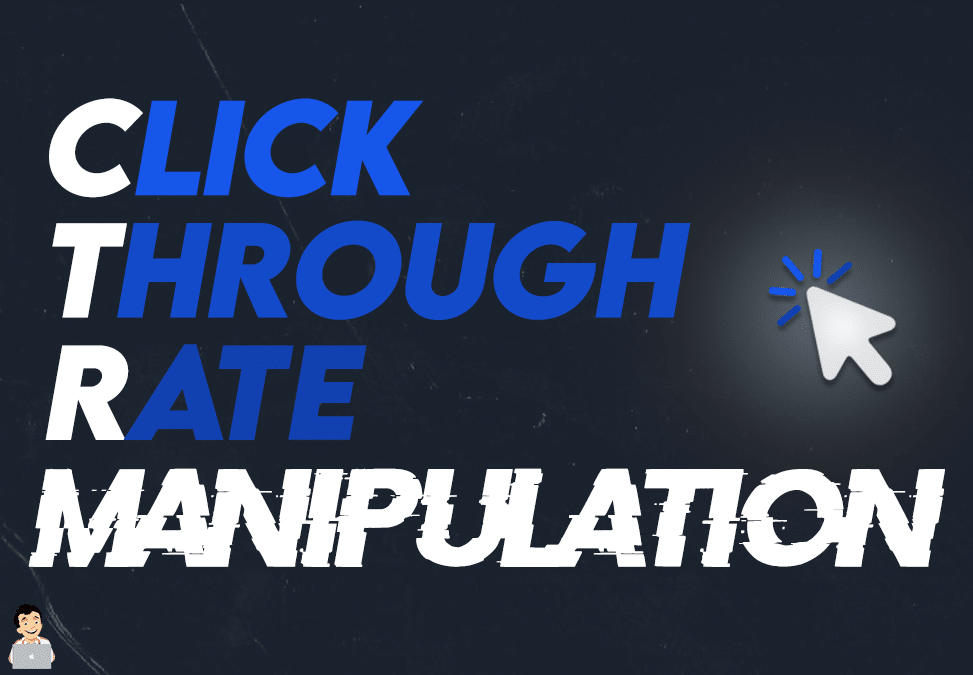Boosting Sales Through Strategic CTR Control
In the competitive landscape of digital advertising, understanding the subtleties of click-through rates (CTR) is essential for driving sales. Strategic control of CTR can lead to raised user interaction and conversion rates, ultimately benefiting the lower line.
Comprehending Click-Through Rate
 Click-through price (CTR) functions as a critical statistics in reviewing the efficiency of digital advertising projects. It represents the proportion of users that click on a particular web link to the overall variety of individuals that view a email, promotion, or web page . Expressed as a percent, CTR provides beneficial insights right into audience interaction and the relevance of the content being promoted.
Click-through price (CTR) functions as a critical statistics in reviewing the efficiency of digital advertising projects. It represents the proportion of users that click on a particular web link to the overall variety of individuals that view a email, promotion, or web page . Expressed as a percent, CTR provides beneficial insights right into audience interaction and the relevance of the content being promoted.A high CTR shows that the content reverberates well with the target audience, motivating them to act. Alternatively, a low CTR might signal that the project is misaligned with individual assumptions or that the call to action is ineffective. A number of factors can influence CTR, consisting of the top quality of the advertisement copy, the appearance of visuals, and the positioning of web links within the content.
Recognizing CTR is necessary for marketing experts looking for to enhance their projects. By assessing CTR data, organizations can identify which approaches are functioning and which need change. This recurring evaluation assists improve targeting, boost content relevance, and ultimately improve the total customer experience. As a fundamental metric, CTR plays a vital function in the iterative process of digital advertising and marketing, leading the way for much more efficient approaches and much better engagement with potential customers.
Value of CTR in Sales
A solid click-through price straight associates with sales performance, highlighting its relevance in the sales channel. CTR functions as an essential indication of just how properly a marketing project converts prospective customers' passion right into workable actions. A high CTR symbolizes that your target market locates your messaging compelling, which is important for driving web traffic to your sales web pages.
In addition, a raised CTR can enhance brand presence and authority. When potential clients engage with your ads or e-mails, it cultivates a perception of depend on and significance, establishing your brand as a go-to service in the marketplace. This can result in raised consumer commitment and repeat acquisitions, additionally boosting sales figures.
Additionally, a durable CTR can favorably affect search engine positions and ad positioning expenses. Greater interaction prices indicate to look engines and marketing platforms that your material is useful, allowing you to gain from far better positioning and possibly reduced costs for clicks.
Methods for Reliable CTR Manipulation
Effective control of click-through prices (CTR) entails a calculated blend of compelling content, targeted target market involvement, and data-driven optimization strategies. To begin, crafting attention-grabbing headings is necessary. A well-structured headline not just ignites passion however likewise motivates users to click with. Integrating power words and resolving the target market's discomfort points can significantly boost interaction.
Next, utilizing high-grade visuals can additionally boost CTR. In addition, using clear and influential calls-to-action (CTAs) can lead users toward the preferred action.
 Segmenting your target market is one more important strategy. CTR Manipulation. Tailoring content and offers to specific demographics guarantees that the messaging reverberates much more deeply, raising the probability of clicks. A/B testing various elements, such as images, ctas, and headings, also offers useful understandings right into what drives higher CTR
Segmenting your target market is one more important strategy. CTR Manipulation. Tailoring content and offers to specific demographics guarantees that the messaging reverberates much more deeply, raising the probability of clicks. A/B testing various elements, such as images, ctas, and headings, also offers useful understandings right into what drives higher CTRAnalyzing User Behavior
Recognizing individual habits is critical for maximizing click-through prices and boosting general advertising and marketing approaches. By assessing how customers connect with web content, marketers can identify patterns, preferences, and pain points that substantially affect interaction. This evaluation involves analyzing metrics such as time invested on page, scrolling habits, and click paths to determine what reverberates with the target audience.
Segmentation is crucial in recognizing individual actions, as different demographics exhibit special tendencies. For example, younger users might be attracted in the direction of visually abundant content, whereas older audiences might prefer straightforward and clear messaging. A/B testing can additionally improve insights by comparing variants in design, messaging, and call-to-action aspects, enabling marketing professionals to discern which alternatives generate greater interaction prices.
In addition, monitoring customer responses through studies and social media can give qualitative information that enriches quantitative findings. Comprehending the emotional triggers that drive user choices is just as reference important; leveraging this knowledge allows the development of compelling web content that urges clicks.
 Inevitably, an extensive evaluation of customer habits not only help in boosting click-through prices but also educates broader marketing methods, making certain that campaigns are customized to meet the developing needs of the target market.
Inevitably, an extensive evaluation of customer habits not only help in boosting click-through prices but also educates broader marketing methods, making certain that campaigns are customized to meet the developing needs of the target market.Determining CTR Success
Determining the success of click-through rates (CTR) requires a methodical approach that improves insights gained from customer actions analysis. To properly evaluate CTR performance, services need to develop clear objectives that straighten with their general marketing find more goals. This structure makes it possible for business to track progression in time and make educated changes.
Key efficiency indications (KPIs) ought to be defined, consisting of target CTR percents based upon market criteria. Regular tracking of these metrics is critical, as it enables for the recognition of anomalies and trends. By segmenting data according to demographics, tool kinds, and engagement levels, organizations can identify which sections carry out best and tailor their strategies appropriately.
A/B screening presents one more important device in determining CTR success. By trying out different advertisement styles, headlines, and calls to action, organizations can recognize the most efficient mixes that reverberate with their target market. Moreover, analyzing the connection between CTR and conversion prices offers deeper insights into the efficiency of advertising initiatives.
Ultimately, an extensive approach to gauging CTR success not just improves project performance however also informs future strategies, driving sustained service growth and improved customer involvement.
Conclusion
In final thought, calculated control of click-through prices (CTR) serves as an important part in enhancing sales efficiency. Continual analysis of individual behavior and measurement of CTR success promote continuous optimization of advertising approaches. GMB CTR Manipulation.
Strategic manipulation of CTR can lead to increased customer interaction and conversion prices, eventually profiting the lower line. Conversely, a low CTR might signal that the campaign is misaligned with individual assumptions or that the call to activity is inefficient.Effective control of click-through prices (CTR) includes a strategic mix of engaging content, targeted audience engagement, and data-driven optimization strategies.Measuring the success of click-through rates (CTR) needs a systematic strategy that constructs on understandings gained from individual actions evaluation. Constant evaluation of customer actions and measurement anchor of CTR success assist in recurring optimization of advertising methods.
 Ben Savage Then & Now!
Ben Savage Then & Now! Jason J. Richter Then & Now!
Jason J. Richter Then & Now! Judd Nelson Then & Now!
Judd Nelson Then & Now! Anthony Michael Hall Then & Now!
Anthony Michael Hall Then & Now! Mike Smith Then & Now!
Mike Smith Then & Now!